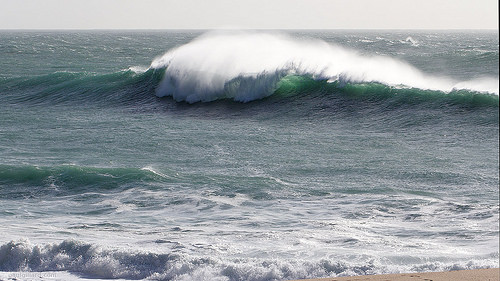
On August 11st, 2016, the CMCC researcher G. Mannarini from OPA Division will give a seminar on “Optimal Ship Routing for Crossing the Atlantic”at MIT (Massachusetts Institute of Technology, Cambridge, MA, USA) in the framework of MSEAS seminar series organised by Prof. Pierre Lermusiaux‘s research group.
The scientist will illustrate the work to develop a numerical model that calculates the efficient and safe routes for a vessel to take across the Atlantic Ocean while presenting the preliminary results of the AtlantOS project in North America.
There is already a software to perform this task, but it could be significantly improved by building on the experience gained with the open-source model VISIR-I and the oceanographic datasets of the Copernicus Marine Environment Monitoring Service. In particular, the VISIR model has been evolved into a new code in Python and the path optimization is now solved on a non-uniform unstructured grid. The new code will start employing the CMCC C-GLORS reanalysis of ocean circulation at 1/4 deg, while other relevant environmental fields will be added later on. The new code will be used for achieving the goals of H-2020 project AtlantOS.
AtlantOS overarching goal is to deliver an advanced framework for the development of an integrated Atlantic Ocean Observing System that goes beyond the state-of–the-art, and leaves a legacy of sustainability after the life of the project.
In particular, AtlantOS will provide a contribution to the societal, economic and scientific benefits arising from its integrated approach.
In the frame of WP8, the work on task “ship routing hazard mapping” has started by developing the fundamental components for computation of safe and efficient routes in the Atlantic. The first component is a non-uniform triangular grid of the ocean, that allows resolving narrow passages such as Gibraltar or strategically important areas such as the Chesapeake Bay in the USA. The second component is an algorithm for computing shortest paths on such grid. Here we cared about landmass avoidance, smoothness of the path, and computational performance.
The seminar at MIT will contribute to dissemination of AtlantOS results in North America, that together with South Africa, is one of the key areas for AtlantOS international cooperation.
See also the G. Mannarini seminar at MIT on “VISIR (discoVerIng Safe and effIcient Routes) for Ship Routing”, on August 9th, 2016.
Links:
Mannarini G., Pinardi N., Coppini G., Oddo P., Iafrati A.
VISIR-I: small vessels – least-time nautical routes using wave forecasts
2016, Geoscientific Model Development, 9, 1597-1625, DOI: 10.5194/gmd-9-1597-2016
Mannarini G., Turrisi G., D’Anca A., Scalas M., Pinardi N., Coppini G., Palermo F. , Carluccio I., Scuro M., Cretì S., Lecci R., Nassisi P., Tedesco L.
VISIR: technological infrastructure of an operational service for safe and efficient navigation in the Mediterranean Sea
2016, Natural Hazards and Earth System Sciences, 16, 1791-1806, DOI: 10.5194/nhess-16-1791-2016, 2016
All the seminars organized by MSEAS.


